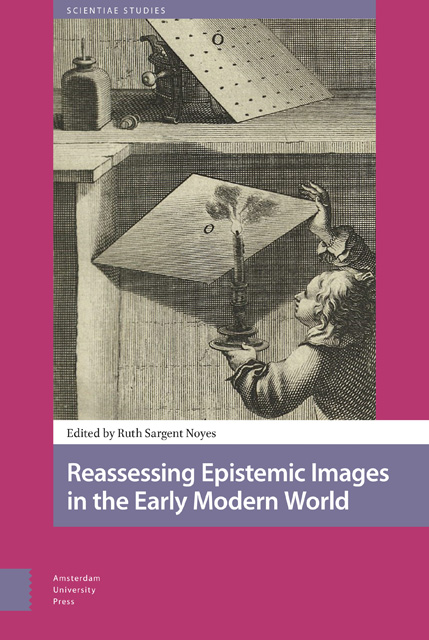Book contents
- Frontmatter
- Dedication
- Table of Contents
- 1 Prologue: For a Metaphorology of Engraving: From Epistemic Images to an Imaged Epistemology
- 2 Introduction: Pittura filosofica: Etching Galileo’s Sunspots and the Discursive Field of Early Modern Epistemic Images
- Part 1 Approaches to Print Matrices
- Part 2 Imprints as Instruments
- Part 3 Imprint, Knowledge, and Affect
- Bibliography
- Index
7 - Visual Worlds on Early Modern Scientific Instruments: Types and Messages
Published online by Cambridge University Press: 15 June 2023
- Frontmatter
- Dedication
- Table of Contents
- 1 Prologue: For a Metaphorology of Engraving: From Epistemic Images to an Imaged Epistemology
- 2 Introduction: Pittura filosofica: Etching Galileo’s Sunspots and the Discursive Field of Early Modern Epistemic Images
- Part 1 Approaches to Print Matrices
- Part 2 Imprints as Instruments
- Part 3 Imprint, Knowledge, and Affect
- Bibliography
- Index
Summary
Abstract
This chapter surveys early modern scientific instruments adorned with images. These images per se have no relevance for the instruments’ use. To date, such “instrumental imagery” and its contexts have only sporadically been analyzed. This paper presents methods aiming at a systematic analysis of this visual material to inquire after its role in the various contexts of the adorned instruments (genesis, function, use) and importance for crafting histories of success and relevance within the emerging field of the sciences. The iconography points to quite a few significant topics: statements of specific positions in theoretical debates; mediation and illustration of knowledge, in particular by picturing the usability of the instruments; or the role of instruments as patronage artefacts.
Keywords: iconography, images, scientific instruments, scientific revolution, visual strategies
Introduction
Historical accounts conventionally highlight two central aspects of the Scientific Revolution of the sixteenth and seventeenth centuries: on the one hand, that this is a period of, arguably, never before imagined dynamics in the “sciences,” embodied in such iconic figures as Copernicus, Galileo, and Newton, and giving rise to countless myths about progress. On the other hand, that it signifies an essential step in the development of present-day scientific disciplines and a milestone in European history, marking the beginning of the scientization of modern societies. A fundamental trait of the Scientific Revolution was the growing epistemic value of practical knowledge in general and of scientific instruments in particular, allowing for a significant extension of the realm of experience. Whereas astrolabes, armillary spheres, air pumps, microscopes, telescopes, and many other devices became increasingly important for the study of nature, they had not yet become standardized and impersonal tools.
That these usually unique items could, by means of function and design, mediate between scholars and social elites means that imagery incised in or imprinted on the surface of such instruments played a crucial role. In fact, a great number of early modern instruments are adorned with such images that per se have no relevance to the object’s practical use: for instance, the depiction of Atlas and Hercules on an astrolabe by Johannes Praetorius (1568, Dresden) or that of tradition in astronomy and geometry from the patriarchs to Copernicus on Jost Burgi’s astronomical equation clock (1591, Kassel).
- Type
- Chapter
- Information
- Reassessing Epistemic Images in the Early Modern World , pp. 153 - 174Publisher: Amsterdam University PressPrint publication year: 2022



